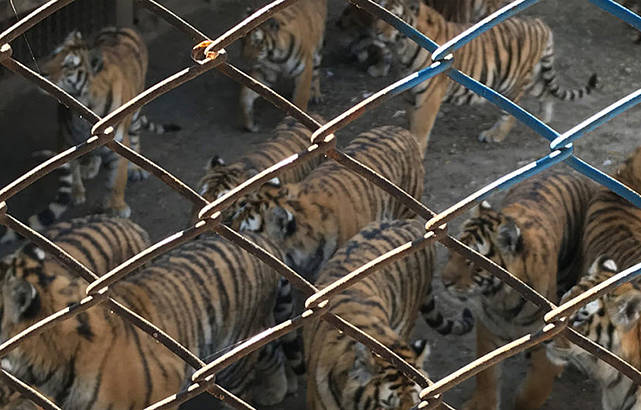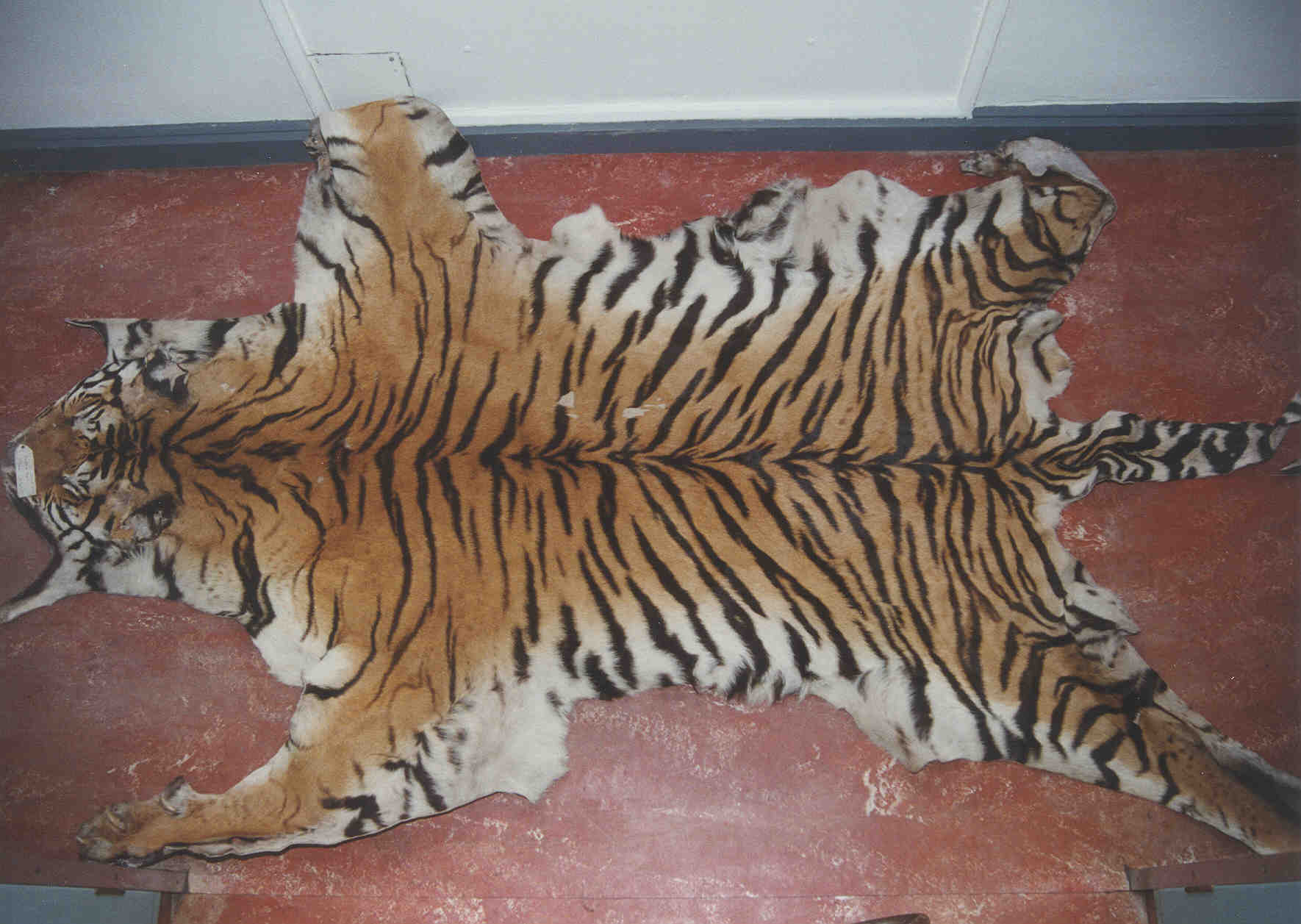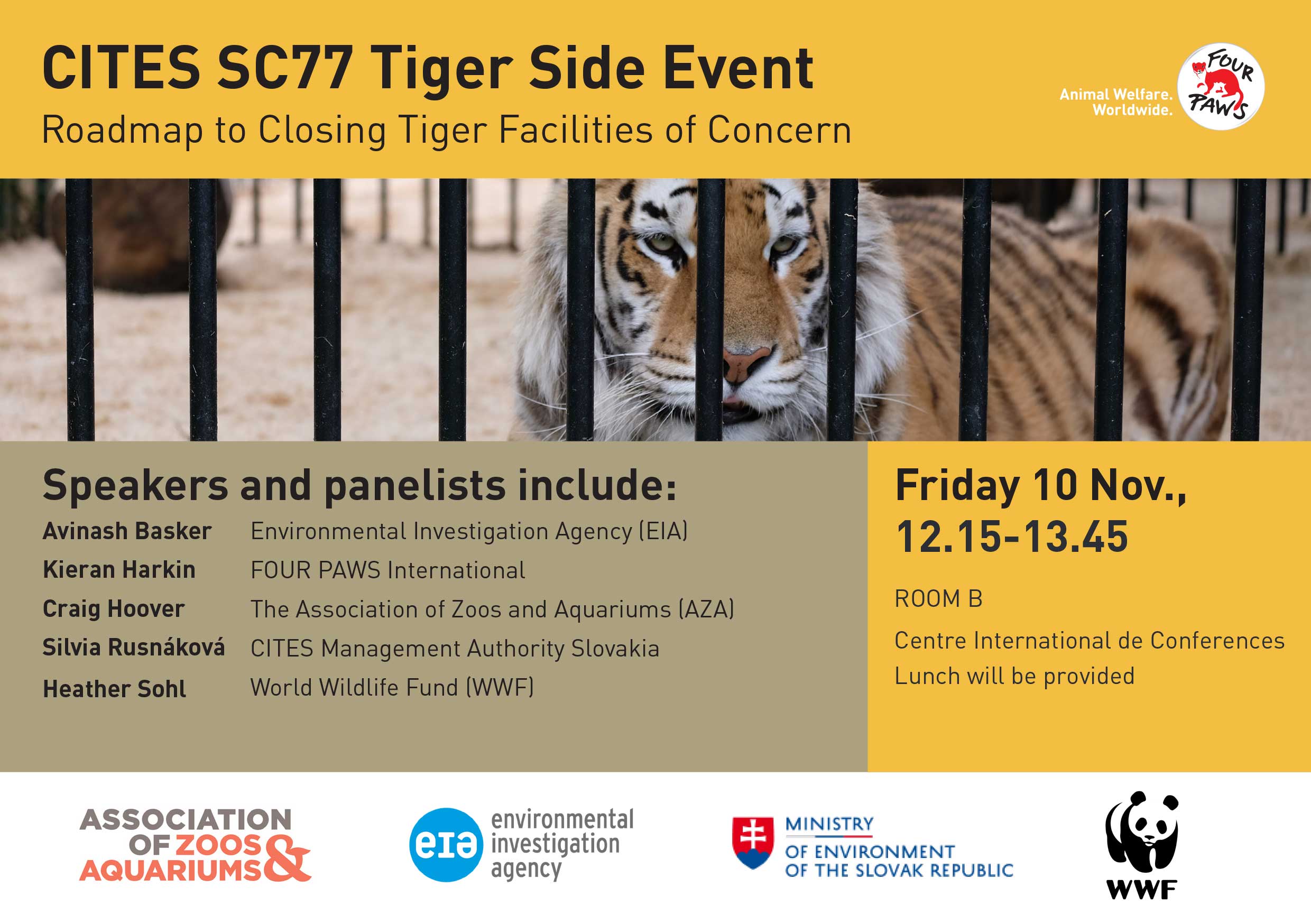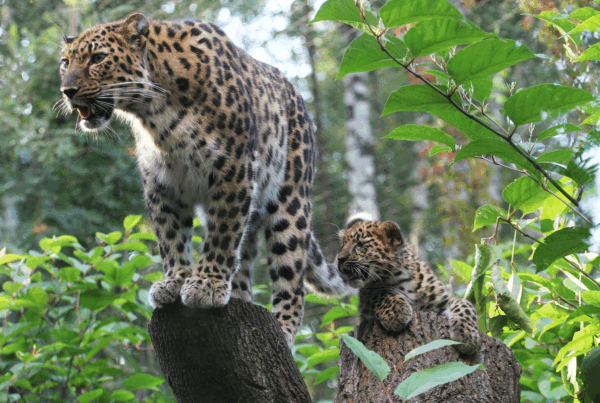- The Roadmap to Closing Captive Tiger Facilities of Concern aims to address the issue of facilities breeding tigers for commercial purposes.
- This plan was presented at the 77th CITES Standing Committee meeting. It proposes phasing out these facilities, emphasising relocation to sanctuaries while acknowledging challenges of capacity and, as a last resort, considering euthanasia if other options fail.
- Financial aspects of tiger care and the need for a formal document listing countries willing to close such facilities are key focus areas for the next steps.
What is a Captive Tiger Facility of Concern?
A “captive tiger facility of concern” is a facility that keeps or breeds tigers in captivity with the intent (or reasonable probability) of supplying or directly engaging in the commercial trade in tigers and/or their body parts or derivatives. The application of this definition is not limited by the stated purpose of such facilities.
Current estimates indicate that at least 8,900 tigers are being held in more than 300 facilities in East and Southeast Asia This is more than double the estimated wild populations. Over 6,000 of these tigers are located in China, with the remaining animals found almost exclusively in Thailand (approx.1,635), Lao PDR (451); and Vietnam (395)*. Additionally, there are significant concerns around captive tiger facilities and their role in the tiger trade in Myanmar, South Africa, and some EU Member States, as well as the large captive tiger population in the United States.
* These numbers are estimates based on the best available information and, particularly in Southeast Asia, can rapidly shift.

Why are these facilities a concern?
- Animal welfare issues: Tiger farming represents a significant animal welfare problem, with issues including indiscriminate breeding, crowding, inappropriate housing systems, genetic abnormalities causing acute suffering, cruel practices perpetuated to better control animals, inhumane slaughtering practices, poor diet, and early removal of cubs from mothers.
- Undermine illegal trade enforcement: The leakage of tiger products (i.e. whole tigers, their parts, or derivatives) from facilities to consumer markets complicates and undermines enforcement efforts aimed at stopping the illegal trade in tiger products. This then impacts the ability of enforcement agencies to track poaching networks and protect tigers in the wild.
- Grows demand: Products from tiger facilities serve to legitimise and normalise demand for wild products. The facilities also rely on demand so work to lobby for the ability to legally sell it. Consumers also have a preference for wild-sourced tiger parts as a more authentic product.

Closing Captive Tiger Facilities of Concern
A Roadmap to Closing Captive Tiger Facilities of Concern has been created by a group of NGOs including WildCats Conservation Alliance. This roadmap presents a set of recommendations to phase out captive tiger facilities of concern and prevent the creation or growth of further such facilities. It outlines a strategic plan of action, designed to address the complexities associated with closing these facilities. This roadmap was released at a Four Paws-hosted side event at the 77th CITES Standing Committee meeting in November 2023 (SC77). The SC77 adopted a series of country-specific recommendations directed to the Czech Republic, South Africa, Thailand, Vietnam, and Laos. The next phase is for the authors of the roadmap to engage with the national stakeholders to help tailor approaches to national circumstances.
Some parties showed less interest in the roadmap and SC77 side event. In its report to SC77, the Chinese government stated it lacks any commercial breeding operations for tigers, contradicting its prior report to CITES and conflicting with evidence gathered by NGOs and media over the last twenty years. The Chinese delegation also expressed skepticism regarding the notion that shutting down farms wouldn’t boost demand for wild tiger parts. However, there have been both theoretical academic work and practical examples showing this wouldn’t be the case – when South Korea announced an end to bear bile farming.
It is however important that we do not only draw our focus to Asia and ignore the facilities of concern in the rest of the world. Not only is this a blinkered approach to the problem but it also makes Asian delegations feel targeted and therefore defensive rather than collaborative. In reality, facilities of concern exist all over the world including in the EU and America.

International adoption of the roadmap
Rogers Innovation-Adoption curve can help us to segment and profile countries to help us understand their needs, show the benefits of peer-to-peer networks, and help us determine how to effectively diffuse the closing of tiger farms through countries of concern.
While international NGOs have been spreading information about the impacts of tiger farming it will be peer-to-peer networks of local NGOs and governments which can better facilitate the adoption of the roadmap. These networks feature countries that have successfully adopted similar processes and can offer credible assurances of their success and associated benefits which will be crucial for wider acceptance.
Rogers model indicates that stakeholders can be broken down into five different segments (see image below) based on their aversion to risk and propensity to adopt an idea. These adopter types have different characteristics such as reasons, opinions, and motivations and therefore need a tailored approach when being addressed.

While South Korea doesn’t have major captive tiger facilities posing concerns and is presently a secondary focus in the efforts to close such establishments, the country has successfully halted bear bile farming, as previously noted. Leveraging their expertise and considering their national symbol is a tiger, South Korea has the potential to become an innovator or early adopter in the closure of tiger farms. They could serve as a culturally fitting peer influencer for other Asian nations, drawing from their experience and aligning with their national identity.
Where will the tigers go as part of the phase-out plan?
Ideally, the tigers should be relocated to accredited sanctuaries and zoos. Yet, the current capacity within these legitimate establishments falls short of accommodating all tigers from concerning facilities should a simultaneous transfer or confiscation take place. While such a scenario is improbable, the lingering issue persists: there is insufficient capacity to house all the tigers in question.
Another option, when rehoming into a legitimate sanctuary or zoo isn’t possible, would be to maintain some tigers in their existing facilities until their natural death. In this situation, the facility’s ownership must be transferred to the government, a zoo, or a sanctuary that must improve conditions to meet the standards of a legitimate sanctuary or zoo as per requirements outlined in the roadmap.
The third possibility involves euthanasia, which entails the compassionate termination of the animal’s life to prevent continued suffering if the aforementioned alternatives are not feasible. However, this decision should be made as a last resort and only after consulting independent veterinarians and assessors.
Addressing the financial aspect of tiger care emerged as a concern during SC77. Four Paws has expressed their intention to calculate preliminary estimates for two scenarios: the cost per tiger for lifelong housing in a sanctuary and the expenses associated with assuming ownership of the current facilities to maintain the tigers there.
At no point should tigers from captive facilities be introduced into the wild as the animals would not survive long and it would pose a risk to humans and livestock.
Next steps
Four Paws and the Environmental Investigation Agency will gather information to compile a comprehensive list of concerning facilities and the associated expenses required to sustain each tiger’s life. Additionally, it is crucial to create an official document listing countries willing to commence efforts aimed at closing down these facilities.





